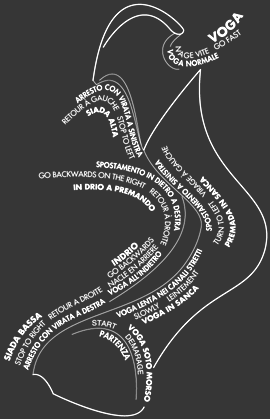
| Rowing |
| The narrow canals and density of the buildings in Venice meant that a special rowing style - voga alla veneta - had to be developed: standing up, possibly with a high vantage point (such as on a gondola or other large working boats) to improve visibility and maneuverability, asymmetrical to take up less space in the canals. This is why it was necessary to use an open rowlock, on which the oar could move freely, passing from one resting point to another to optimize propulsion, to allow any kind of maneuver and above all to allow the boat to move in a straight line despite being rowed from only one side. | |
|
drawing: peppe clemente |
This
is why the fórcola has developed its characteristically
sculptural forms, while the oar has lines and volumes which are particularly
hydrodynamic. Also, in each rowing position (for example, bow or stern), the fórcola
has a particular form which also varies in relation to the size and shape of
every single oarsman. A number of aesthetic variations further increase
the range of types of fórcola.
|
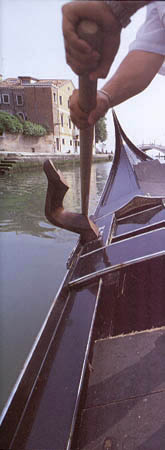
Starting off |
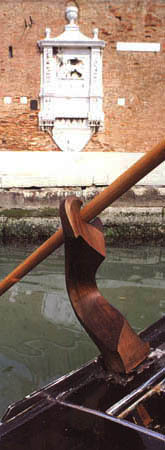
Normal rowing position |
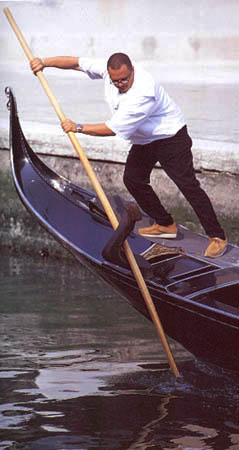
Rowing backwards |
|
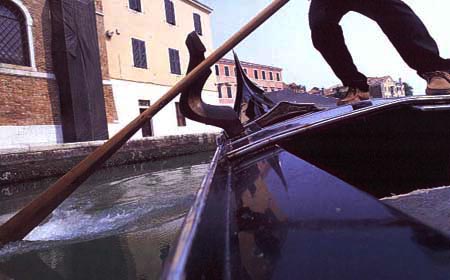
Stopping photos: Piermarco Menini |
|
|
Saverio
Pastor, Dorsoduro 341, Fondamenta Soranzo, 30123 Venezia, Italy - tel: ++39 041 5225699 e-mail:
|
